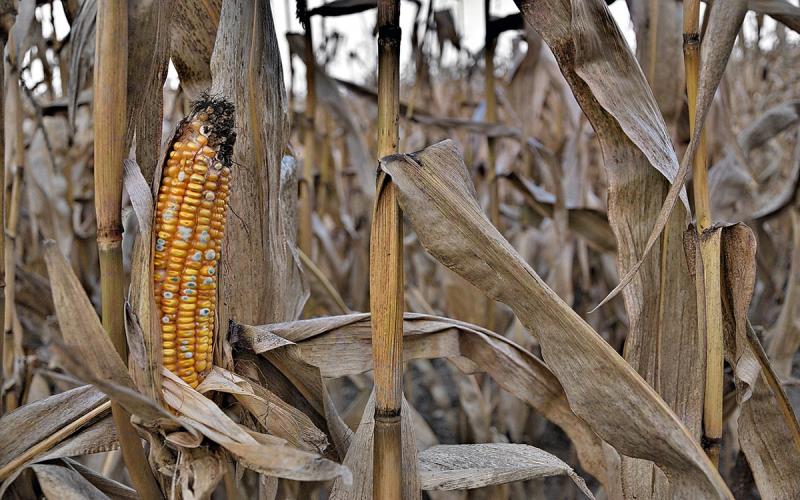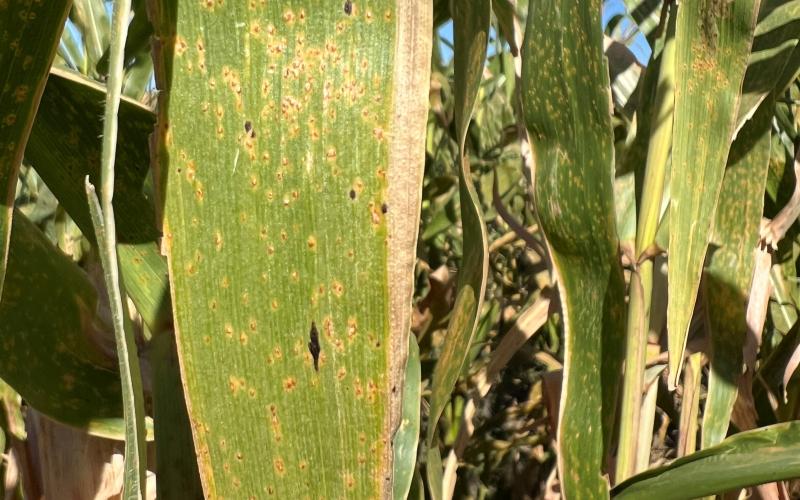Written collaboratively by Madalyn Shires, Cody Molnar, Connie Strunk, and Dalitso Yabwalo.
Recent Tar Spot Reports
On July 25, 2025, trace amounts of tar spot were found in Yankton (Figure 1) and Bon Homme (Figure 2) counties. Very few lesions were found per field. The corn field in Yankton County was confirmed with high levels of tar spot disease in 2024 and was planted into corn again for 2025. Tar Spot lesions were found in the low to mid canopy and are thought to have originated from corn residue instead of windblown spores. This speaks to the importance of crop rotation in the management of this disease.
Tar spot was found in the mid to upper canopy in the Bon Homme County field, suggesting that this is the result of a windblown infection. In both of these cases, it is important to continue scouting for disease and determining what management measures should be taken.
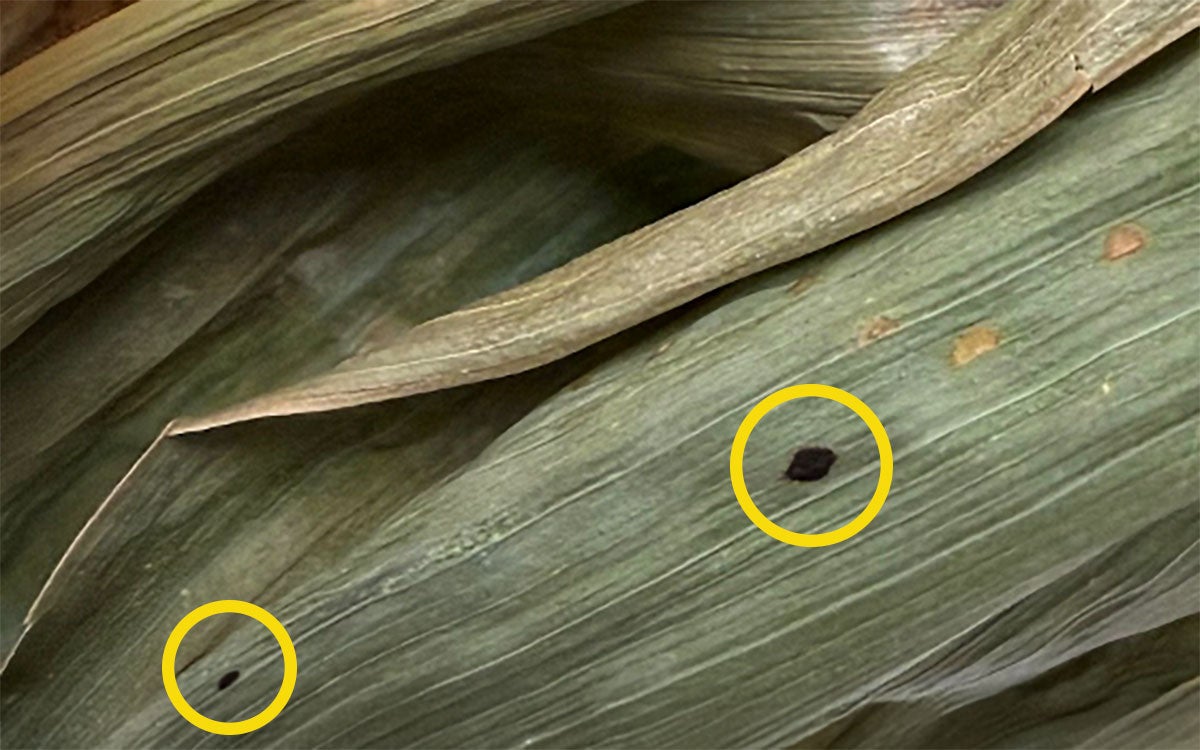

Scouting and Management
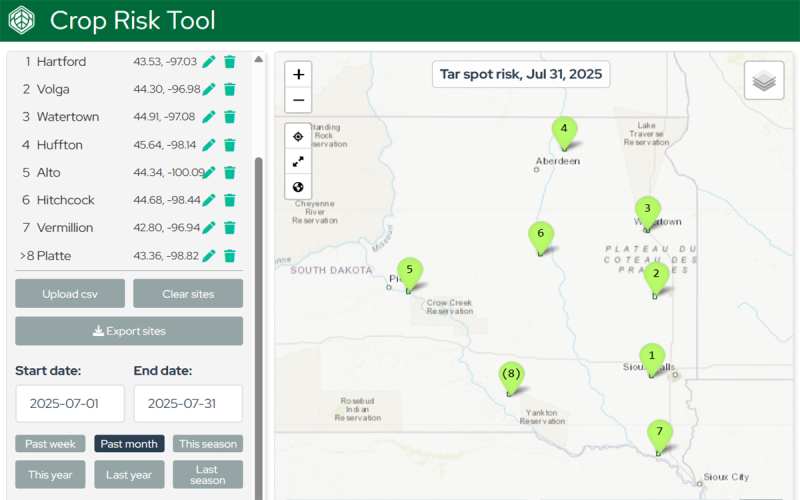
Currently, infection loads are thought to be low enough that fungicide sprays aren’t needed for specific management for Tar Spot. Tar Spot typically causes yield reductions when moderate to severe infections occur before the corn plant is able to reach physiological maturity. For management recommendations, see the Crop Protection Network Fungicide Efficacy Tool and view the most-recent South Dakota Pest Management Guide - Corn. For a guide to learn about tar spot leaf coverage (we are less than 1% coverage in South Dakota right now), see the Crop Protection Network Tar Spot Coverage Tool.
Additional Tar Spot reports have been made for Spink County and Roberts County. We have not confirmed those reports in the Plant Diagnostic Clinic, and they are considered to be suspect and unconfirmed at this time. We will continue scouting over the next few weeks and will continue to update if we find more positive counties. Moody, Brookings, Deuel counties have also bee scouted with no disease found.
Figures 3-5 show the predicted risk of tar spot development over the next 5 days for several locations across the state. All locations are considered to be low for development of tar spot if there is tar spot present in the area. This map is built with randomly selected locations. You build your own Crop Risk Map using the Crop Protection Network Crop Risk Tool.

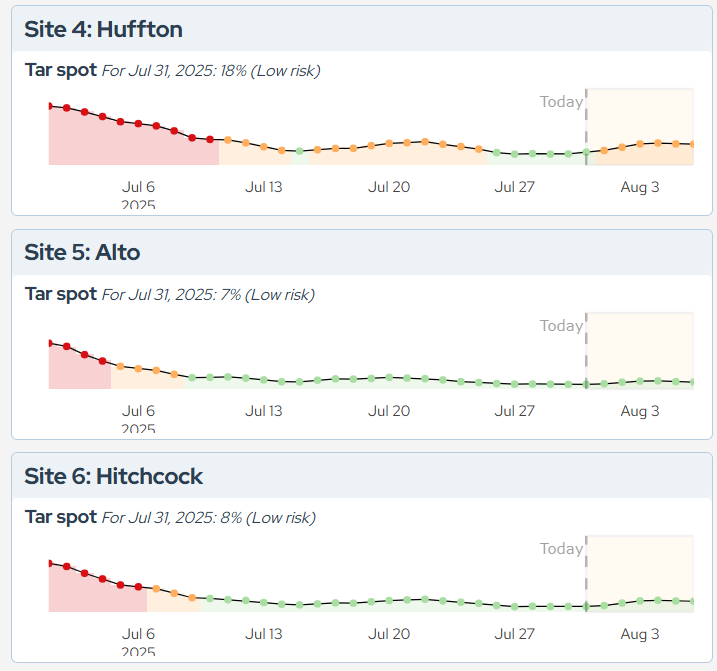
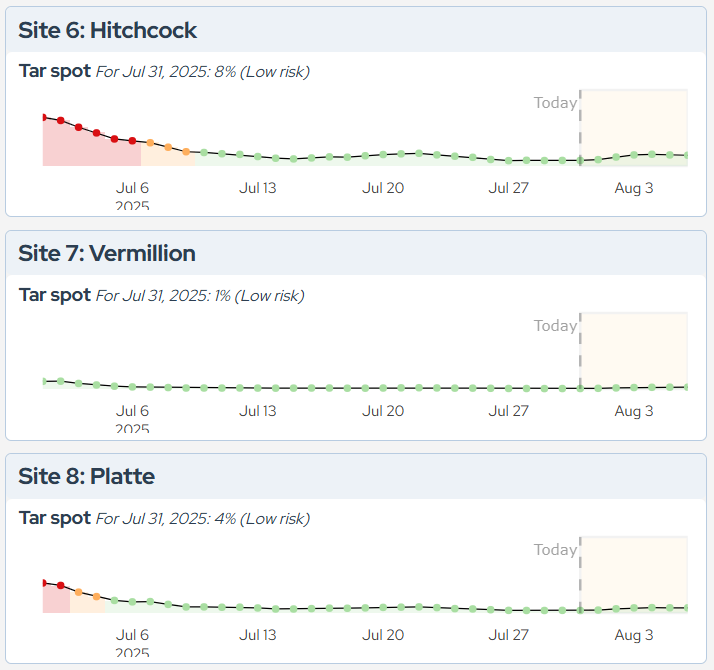
Reporting an Outbreak
If you suspect Tar Spot is in your field, feel free to send pictures to Madalyn Shires, SDSU Extension Plant Pathology Specialist. Samples can be microscopically confirmed for a fee by the Plant Diagnostic Clinic as well. You can also follow the Crop Protection Network Tar Spot Tracking Map to stay up to date.

